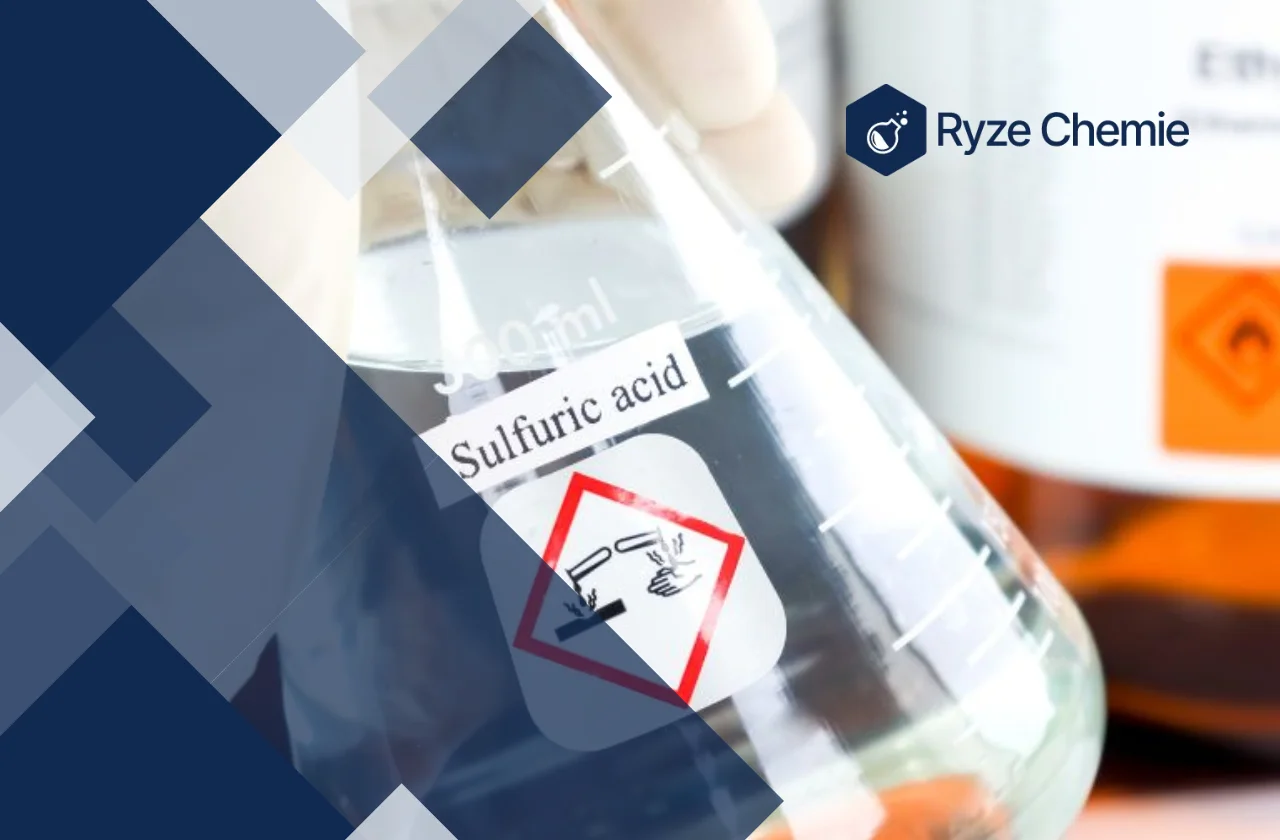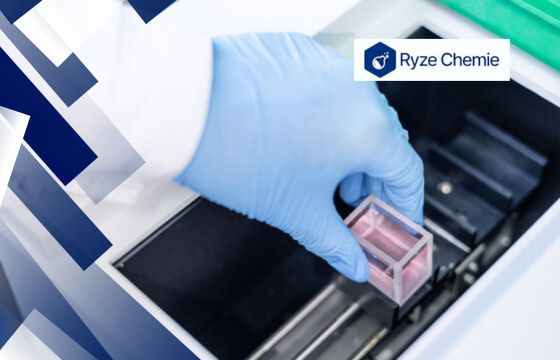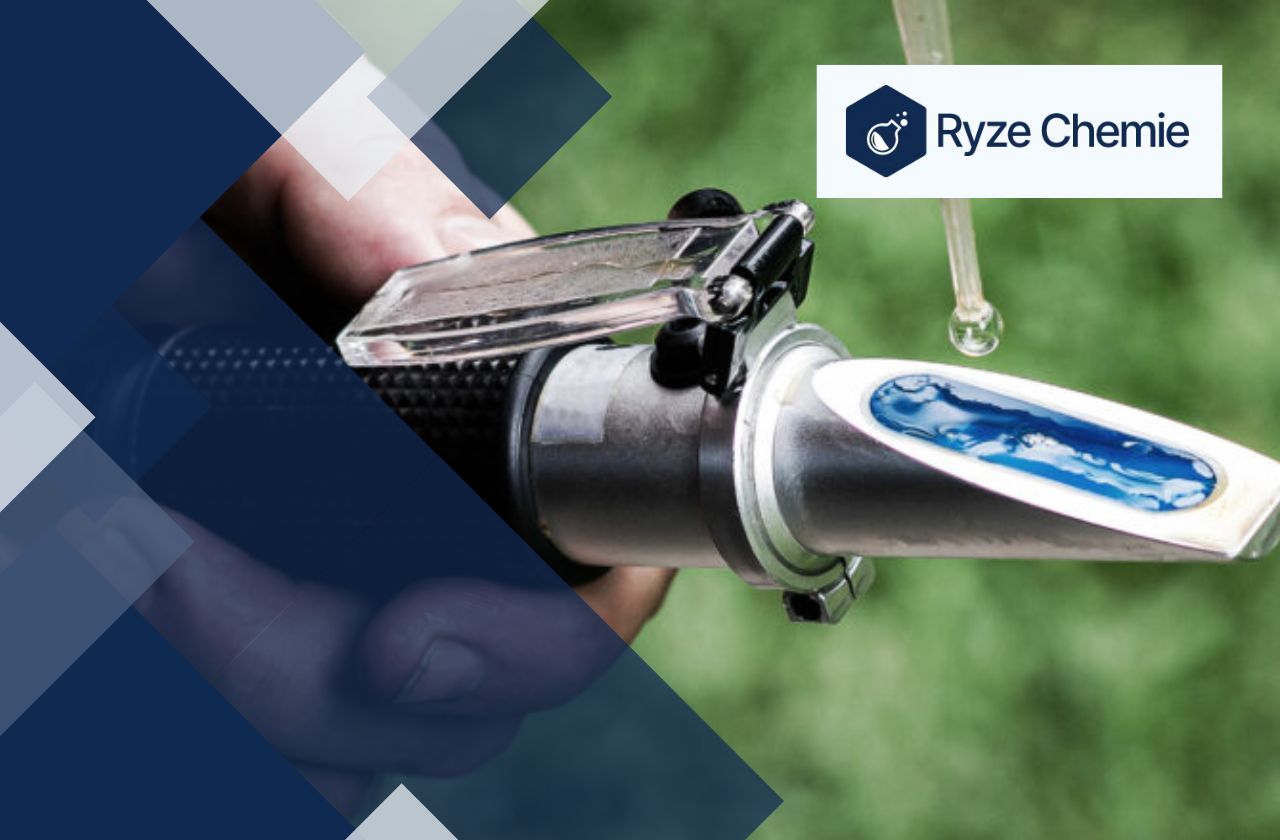
Stay up-to date on the
latest blogs. Join our
newsletter today!
This site is protected by reCAPTCHA and the Google Privacy Policy and Terms of Service apply.
How to Neutralize Acid: Effective Ways (2024)

16 mins read · May 06, 2024

Acid spills pose serious risks in laboratories. Cleaning them up quickly and safely is paramount. But it's not always easy. Workers face challenges in neutralizing acids effectively. The process demands precision and expertise.
This article offers practical solutions. From using neutralizing agents to proper disposal methods, we cover it all. By following these steps, laboratory personnel can tackle acid spills with ease.
With the right techniques at hand, neutralizing acids becomes a routine task, ensuring smooth laboratory operations and safety compliance.
Importance of Acid Neutralization in Labs
In order to ensure the safety and integrity of laboratory experiments, acid neutralization is essential. By neutralizing acids, we can prevent accidents, protect equipment, and maintain the stability of chemical reactions:
1) Safety hazards of unneutralized acids (burns, fumes, etc.)
Unneutralized acids present a variety of safety hazards in the laboratory.
- Skin and eye burns: Contact with concentrated acids can cause severe burns on the skin and eyes. Acids can penetrate clothing and continue burning even after contact is stopped.
- Fume inhalation: Acids release toxic fumes that irritate the respiratory system. Inhalation can cause coughing, wheezing, and difficulty breathing. Long-term exposure can lead to permanent lung damage.
- Fire and explosion: Certain acids can react violently with organic materials or other chemicals, causing fires or explosions.
- Broken containers: Leaks or spills of unneutralized acids can damage equipment and contaminate surfaces. Cleaning up spills of concentrated acids is a hazardous task.
By neutralizing acids before disposal, these risks are significantly reduced. Neutralized solutions are less corrosive and pose a lower threat to skin, eyes, and the respiratory system. The risk of fire or explosion is also minimized.
2) Environmental impact of improper disposal
Improper disposal of unneutralized acids can have a detrimental impact on the environment.
- Water contamination: If acids are poured down the drain, they can flow into sewage systems and eventually contaminate rivers, lakes, and oceans. This can harm aquatic life and disrupt ecosystems.
- Soil contamination: Unneutralized acids spilled on the ground can seep into the soil, contaminating groundwater and harming plants and soil organisms.
Neutralization significantly reduces the environmental impact of acid disposal. Neutralized solutions are less acidic and less harmful to aquatic life and ecosystems.
3) Regulatory compliance
Most countries have regulations governing the disposal of hazardous waste, including acids. These regulations often specify that acids must be neutralized before disposal.
- Fines and penalties: Failure to comply with regulations on acid disposal can result in fines or other penalties.
- Liability: Improper disposal of acids can lead to environmental damage and potential lawsuits.
Neutralizing acids before disposal ensures compliance with environmental regulations and helps to minimize the risk of legal repercussions.
Now, let's take a closer look at some of the common laboratory acids you may come across and the potential hazards they pose.
What are some of the common laboratory acids?
In laboratory settings, you may encounter various acids such as hydrochloric acid, sulfuric acid, nitric acid, and acetic acid. Each of these acids has unique properties and poses specific risks if not handled properly:
1) Hydrochloric Acid (HCl)
Hydrochloric acid, a colorless solution of hydrogen chloride gas in water, is a strong and versatile acid. It is used in titrations, metal cleaning, and organic synthesis.
Neutralization: Due to its strength, concentrated hydrochloric acid requires a strong base for neutralization. Sodium hydroxide (NaOH) or calcium hydroxide (Ca(OH)2) are suitable choices. Always add the acid slowly to a well-stirred solution of the base diluted in a large volume of cold water. Monitor the pH to ensure complete neutralization, aiming for a final pH between 6 and 8.
2) Sulfuric Acid (H2SO4)
Sulfuric acid, a viscous, colorless liquid, is another strong mineral acid. Known for its dehydrating properties, it has applications in desiccation, synthesis reactions, and battery electrolytes.
Neutralization: Similar to hydrochloric acid, sulfuric acid requires a strong base for neutralization. Sodium hydroxide or calcium hydroxide works well. Due to the heat generated during neutralization, slowly add the concentrated acid to a cool, well-stirred solution of the base diluted in a large volume of water. Monitor the temperature and pH to ensure complete neutralization, targeting a final pH of 6 to 8.
3) Nitric Acid (HNO3)
Nitric acid, a colorless, fuming liquid, is a strong oxidizing acid. It is valuable for metal dissolution, nitration reactions, and passivation.
Neutralization: Nitric acid’s oxidizing nature necessitates caution during neutralization. Sodium carbonate (Na2CO3) or sodium bicarbonate (NaHCO3) are preferred due to their buffering capacity, minimizing the risk of hazardous gas evolution. Slowly add the concentrated acid to a well-stirred solution of the base in a large volume of cold water. Monitor the pH to achieve a final range of 6 to 8.
4) Acetic Acid (CH3COOH)
Acetic acid, the main component of vinegar, is a weak organic acid. It has applications in buffer preparation, organic synthesis, and as a solvent.
Neutralization: Due to its weaker nature, acetic acid can be neutralized with various bases. Sodium hydroxide, sodium bicarbonate, or even calcium carbonate (CaCO3) can be used. Slowly add the acid to a well-stirred solution of the base diluted in a large volume of water. Monitor the pH to reach a final range of 5 to 8.
5) Phosphoric Acid (H3PO4)
Phosphoric acid, a colorless, syrupy liquid, is a weak triprotic acid. It is used in rust removal, etching, and preparation of phosphate buffers.
Neutralization: Phosphoric acid’s weak nature allows for a wider range of bases for neutralization. Sodium hydroxide, sodium carbonate, or sodium bicarbonate are all suitable options. Slowly add the acid to a well-stirred solution of the base diluted in a large volume of water. Due to its multiple acidic protons, phosphoric acid requires more base for complete neutralization. Monitor the pH to reach a final range of 6 to 8.
With an understanding of common laboratory acids, let's delve into the process of acid neutralization and how it works.
Understanding Acid Neutralization
Acid neutralization is the process of balancing acidic solutions by adding a base to raise the pH level to a safe and neutral range. This process helps to reduce the corrosive properties of acids and mitigate their harmful effects:
Brønsted-Lowry Theory (brief explanation)
The Brønsted-Lowry theory offers a comprehensive definition of acids and bases based on proton transfer. According to this theory:
- An acid is a substance that donates a proton (H+).
- A base is a substance that accepts a proton (H+).
This theory emphasizes the transfer of protons between species. When an acid donates a proton, it becomes a conjugate base. Conversely, when a base accepts a proton, it becomes a conjugate acid.
Example:
In the reaction between hydrochloric acid (HCl) and sodium hydroxide (NaOH), HCl acts as the acid by donating a proton (H+) to NaOH. NaOH acts as the base by accepting the proton.
HCl (acid) + NaOH (base) → NaCl (salt) + H2O (water)
Here, Cl- becomes the conjugate base of HCl after donating a proton, and Na+ becomes the conjugate acid of NaOH after accepting a proton.
Definition of Acids and Bases
Acids and bases are classified based on their proton-transfer behavior.
Acid: An acid is a molecule or ion that can donate a proton (H+) in a chemical reaction. Common characteristics of acids include:
- Sour taste
- Electrical conductivity in aqueous solutions
- Ability to turn litmus paper red
Base: A base is a molecule or ion that can accept a proton (H+) in a chemical reaction. Common characteristics of bases include:
- Bitter taste
- Slippery feel
- Ability to turn litmus paper blue
The strength of an acid or base refers to its willingness to donate or accept protons, respectively. Strong acids readily donate protons, while weak acids donate them to a lesser extent. Similarly, strong bases readily accept protons, while weak bases accept them less effectively.
Role of H+ ions in Neutralization Reactions
Hydrogen ions (H+) play a crucial role in acid neutralization reactions. Here's how:
Dissociation of Acids: In aqueous solutions, acids dissociate to release H+ ions and their conjugate bases. For example, hydrochloric acid (HCl) dissociates as follows:
HCl (aq) → H+ (aq) + Cl- (aq)
Proton Transfer: When an acid and a base react, the acid donates its H+ ion to the base. The base accepts the H+ ion and forms its conjugate acid.
Formation of Water: The donated H+ ion from the acid combines with a hydroxide ion (OH-) from the base to form water (H2O). This reaction removes both the acidic and basic properties from the solution.
Neutralization Point: The neutralization point is reached when the moles of acid added are equal to the moles of base required to consume all the available H+ ions. At this point, the solution becomes neutral, meaning it has a pH of 7.
Example:
Consider the neutralization reaction between hydrochloric acid (HCl) and sodium hydroxide (NaOH):
HCl (aq) + NaOH (aq) → NaCl (aq) + H2O (l)
In this reaction, HCl donates an H+ ion, which combines with the OH- ion from NaOH to form water. The remaining Na+ and Cl- ions form sodium chloride (NaCl), a salt.
Understanding the role of H+ ions in acid neutralization is essential for various laboratory practices. It helps predict the outcome of reactions involving acids and bases, ensure proper handling of these chemicals, and maintain a safe and controlled laboratory environment.
Now, let's explore the methods of acid neutralization commonly used in laboratory settings.
Methods of Acid Neutralization in the Laboratory
Laboratories utilize various methods to neutralize acids, each tailored to specific needs and circumstances. From simple titrations to more complex procedures, understanding these methods is essential for effective acid management.
Let's explore the diverse techniques employed for acid neutralization in laboratory settings:
A. Selecting the Neutralizing Agent
Choosing the appropriate neutralizing agent is essential for safe and efficient acid neutralization. Here are key factors to consider:
1) Type and concentration of acid: The strength of the acid (strong vs. weak) and its concentration (dilute vs. concentrated) influence the neutralizing agent selection. Stronger acids require stronger bases for neutralization.
2) Desired final pH of the neutralized solution: Depending on the application, the final pH of the neutralized solution might be crucial. Certain weak bases can achieve a specific pH range, while strong bases may lead to a more neutral solution (pH 7).
3) Safety considerations (reactivity, exothermic reactions): Neutralization reactions can be exothermic, generating heat. Strong bases like sodium hydroxide (NaOH) and calcium hydroxide (Ca(OH)2) react vigorously with acids, releasing significant heat.
Common Neutralizing Agents for Acids
Here's a breakdown of commonly used neutralizing agents for acids in the laboratory:
Weak bases (sodium bicarbonate (NaHCO3), sodium carbonate (Na2CO3), borax (Na2B4O7•10H2O): These are suitable for neutralizing weak acids and offer better control over the final pH, often resulting in a slightly acidic or slightly basic solution. They are generally safer to use due to fewer exothermic reactions.
Strong bases (sodium hydroxide (NaOH), calcium hydroxide (Ca(OH)2): Effective for neutralizing strong acids, but use with caution due to the potential for exothermic reactions. These reactions can cause splattering and boiling, posing safety risks.
Choosing the Right Base:
When selecting a neutralizing agent, consider the factors mentioned above. For weak acids and achieving a specific, non-neutral final pH, weak bases are preferred. For strong acids or when a neutral final pH is desired, strong bases can be used with caution and proper safety measures.
B. Neutralization Procedure Guidelines
Safety Precautions:
- Personal Protective Equipment (PPE): Always wear appropriate PPE, including safety glasses, gloves, and a lab coat, when handling acids and bases.
- Fume hood: Utilize a fume hood for ventilation when working with strong acids or bases to avoid inhaling harmful fumes.
- Spill kit: Have a spill kit readily available to address any potential acid spills promptly and safely.
Importance of Proper Ventilation:
Ensure adequate ventilation in the laboratory, especially when using strong bases or concentrated acids. Fume hoods are essential for these situations to prevent exposure to hazardous fumes.
Step-by-step Guide:
Containing the acid spill: First, contain the acid spill using spill pads or a suitable absorbent material. Never attempt to neutralize a large acid spill without proper training and procedures.
Gradual addition of neutralizing agent: Slowly add the chosen neutralizing agent to the acid spill in small portions while stirring constantly. This controlled addition helps prevent excessive heat generation and potential splattering.
Monitoring pH using pH paper or pH meter: Monitor the pH of the neutralized solution regularly using pH paper or a pH meter. Stop adding the neutralizing agent once the desired pH range is reached. Over-neutralization can lead to a basic solution.
Proper disposal of neutralized waste: Neutralized waste should be disposed of according to established laboratory waste disposal procedures. The specific disposal method depends on the type of acid, neutralizing agent used, and the final pH of the neutralized solution.
Additional Notes:
- When unsure about the type or concentration of the acid spill, consult a Safety Data Sheet (SDS) or seek guidance from a qualified supervisor.
- For large acid spills, emergency response procedures should be followed immediately.
- Record the type and amount of acid neutralized, the neutralizing agent used, and the final pH of the neutralized waste for proper documentation.
By following these guidelines and selecting the appropriate neutralizing agent, laboratory personnel can safely and effectively neutralize acid spills and manage acidic waste. Remember, safety is paramount when working with acids and bases. Always prioritize proper precautions and procedures.
Next, we'll discuss special considerations to keep in mind when neutralizing different types of acids.
Special Considerations for Different Acids
Different acids present unique challenges and require specific approaches for safe neutralization. Understanding these considerations is crucial for mitigating risks and ensuring a secure working environment in laboratories.
Let's examine the special considerations involved in neutralizing various types of acids commonly encountered in lab settings:
Strong Mineral Acids (hydrochloric acid, sulfuric acid)
Strong mineral acids, like hydrochloric acid (HCl) and sulfuric acid (H2SO4), are highly corrosive and can cause severe burns upon contact. Due to this increased risk, special precautions are necessary during neutralization.
Higher Safety Precautions: When working with strong mineral acids, wear appropriate personal protective equipment (PPE), including chemical splash goggles, gloves resistant to the specific acid, and a lab coat. Ensure adequate ventilation is present in the work area to avoid inhaling acid fumes.
Recommendation of Weak Base Neutralizers (Sodium Bicarbonate): Strong bases can generate a significant amount of heat during neutralization, creating a safety hazard. For strong mineral acids, a weaker base like sodium bicarbonate (NaHCO3) is often recommended. Sodium bicarbonate neutralizes the acid slowly, minimizing heat generation and reducing the risk of splattering.
Remember: When using sodium bicarbonate for neutralization, consider the final product's solubility. The reaction between strong mineral acids and sodium bicarbonate produces carbon dioxide gas (CO2), which can evolve rapidly if large volumes are used.
Weak Organic Acids (acetic acid, citric acid)
Weak organic acids, such as acetic acid (CH3COOH) found in vinegar and citric acid (C6H8O7) present in citrus fruits, are generally less hazardous to handle compared to strong mineral acids. This allows for more flexibility in choosing a neutralizing agent.
Less Hazardous, Allowing for a Wider Range of Neutralizers: Due to their lower corrosivity, weak organic acids can be neutralized with both weak and strong bases. Commonly used bases for neutralization include sodium hydroxide (NaOH), sodium carbonate (Na2CO3), and calcium hydroxide (Ca(OH)2).
Importance of Considering Final Product Solubility: When selecting a neutralizer for a weak organic acid, consider the solubility of the resulting salt. For example, neutralizing acetic acid with sodium hydroxide produces sodium acetate (CH3COONa), a highly soluble salt. However, using calcium hydroxide with acetic acid would generate calcium acetate (Ca(CH3COO)2), which has lower solubility in water.
In some cases, the desired final product may influence the choice of neutralizer. For instance, if calcium acetate is the target compound, calcium hydroxide would be the preferred neutralizing agent for acetic acid despite the potential for precipitation.
Conclusion
In conclusion, neutralizing acid demands precision and caution. Dilution with water is a fundamental method, followed by careful addition of a base like sodium hydroxide.
Utilize appropriate protective gear and handle chemicals with care to prevent accidents. Titration ensures accurate neutralization, allowing precise measurement of acid content.
Remember to dispose of waste properly to avoid environmental harm. Regular training and adherence to safety protocols are essential for laboratory personnel.
By employing these effective techniques, acid neutralization can be accomplished efficiently and safely in laboratory settings. Always prioritize safety to maintain a secure working environment.
FAQs related to Neutralizing Acid Spills
1) What is the easiest way to neutralize an acid spill?
The easiest way to neutralize a small acid spill depends on the available materials and the type of acid. For weak acids, a common laboratory neutralizing agent is sodium bicarbonate (baking soda). It's easy to use and offers good safety properties. However, for strong acids or larger spills, other neutralizing agents like sodium carbonate (soda ash) may be more appropriate due to their higher neutralization capacity.
2) What neutralizes an acid?
A base neutralizes an acid. During neutralization, a chemical reaction occurs between the acid and the base, reducing the acidity of the solution. This process typically results in the formation of water and salt.
3) What do you use to neutralize a strong acid?
Strong acids require stronger bases for effective neutralization. While sodium bicarbonate can work for weak acids, stronger bases like sodium carbonate (soda ash) or calcium carbonate (lime) are better suited for neutralizing strong acid spills. Consider factors like the amount of acid spilled and the ventilation available when choosing a neutralizing agent.
4) Can you neutralize acid with baking soda?
Yes, baking soda (sodium bicarbonate) can neutralize acid spills, but its effectiveness depends on the acid's strength. For weak acids and small spills, baking soda is a good choice due to its availability and ease of use. However, for strong acids or larger spills, it may not be sufficient. Choose the neutralizing agent based on the specific acid and the size of the spill.
Latest Blogs








